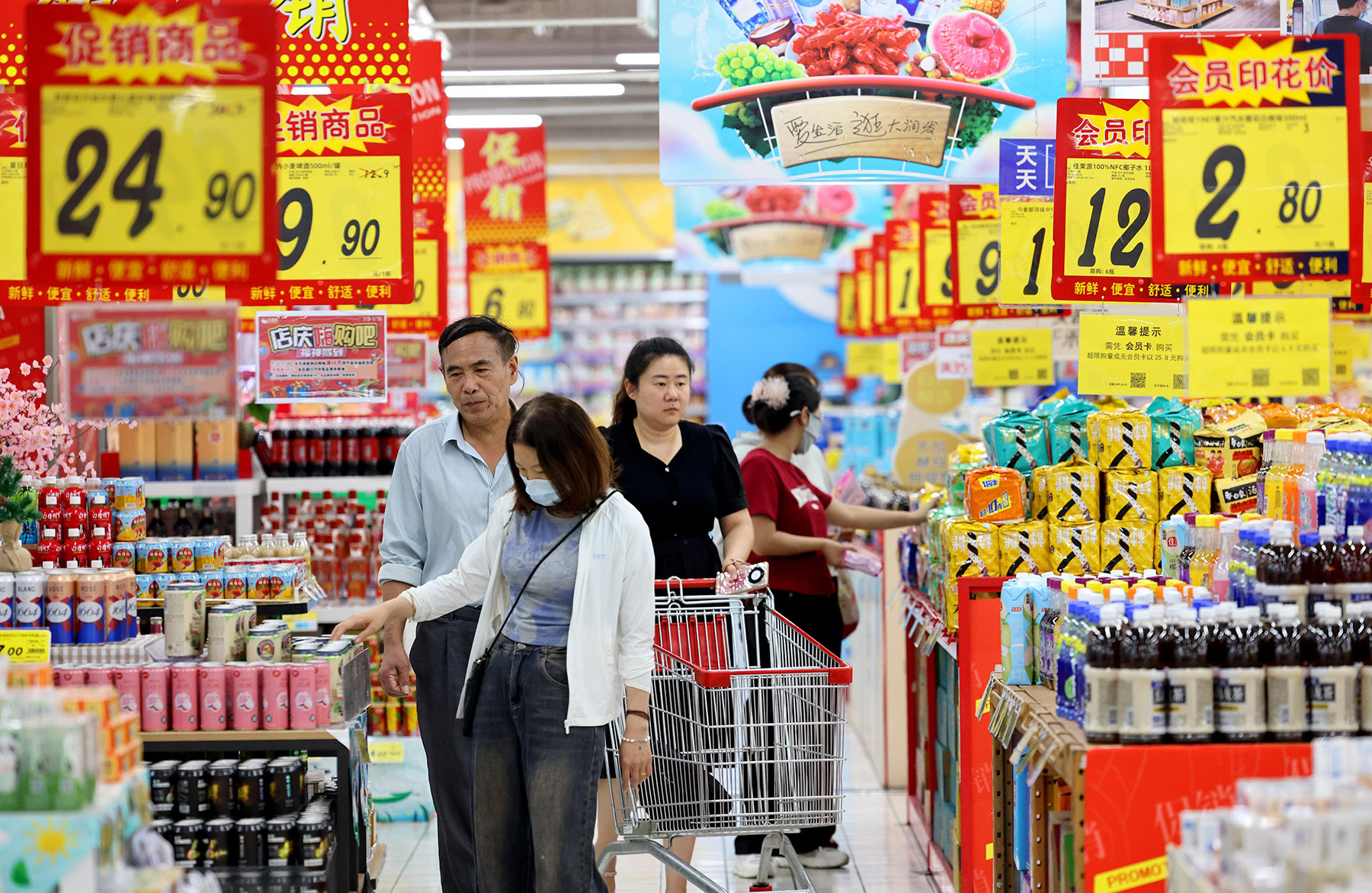Recovery in demand, consumption foreseen on back of policy measures

China's consumer prices will likely increase modestly in the second half of this year, as domestic demand and consumption are expected to recover with a series of macroeconomic policy measures taking effect gradually, analysts said.
However, they noted the persistently low price levels underline the challenges for policymakers trying to boost confidence in the world's second-largest economy, highlighting the necessity for stronger fiscal and monetary support in the remainder of the year.
READ MORE: China sees stable price growth as economic recovery continues
Their comments came as data from the National Bureau of Statistics showed on Wednesday that the country's consumer price index, a main gauge of inflation, rose by 0.2 percent year-on-year in June after a 0.3 percent rise in May.
The growth in core CPI, which excludes volatile food and energy prices and is deemed a better gauge of the supply-demand relationship in the economy, rose by 0.6 percent year-on-year in June, unchanged from the growth in May.
"The mild rise in consumer prices points to the economy's continued recovery trend, while the persistently low price levels suggest the domestic demand recovery is slow and bumpy," said Zhou Maohua, a researcher at China Everbright Bank.
"More steps are needed to boost domestic demand and spur consumption."
While consumer prices rose mildly in June, China's producer price index, which gauges factory-gate prices, dropped by 0.8 percent from a year ago in June, narrowing from a 1.4 percent fall in May, the NBS said.
Zhou said a slowdown in the PPI declines reflects the improvement in the supply and demand situation for the industrial sector, mainly due to the strong policy support, gradual recovery in market demand, improvement in business inventories, international commodity price fluctuations and low base effect.
"China's consumer prices stabilized in the first half of 2024, while the decline in factory-gate price narrowed," said Zhang Xuewu, head of the price analysis and forecasting division at the National Development and Reform Commission's Price Monitoring Center.
NBS data showed China's CPI increased 0.3 percent year-on-year in the second quarter. In the first quarter, however, it remained flat. The PPI dropped 1.6 percent in the second quarter, narrowing from a 2.7 percent decline in the first quarter.
Looking ahead, Zhang said he expects a mild rise in overall price levels with macroeconomic policies taking effect gradually and a steady recovery in demand for goods and services.
Wen Bin, chief economist at China Minsheng Bank, estimates China's CPI will rise around 0.5 percent year-on-year this year, higher than the 0.1 percent rise in the first half. The PPI may drop around 1.3 percent this year, narrowing from a 2.1 percent decline in the first half, he said.
The latest economic data showcased a mixed picture of the stabilizing economy. Media group Caixin said the Caixin China General Manufacturing Purchasing Managers' Index rose to 51.8 in June from 51.7 in May, while NBS data showed the official manufacturing PMI stood at 49.5 in June, unchanged from May, and still below the 50-point mark that separates growth from contraction.
ALSO READ: More policy support needed to boost demand amid CPI rise, say experts
"Domestic activity indicators continue to suggest that economic momentum in China has likely softened in the second quarter," said Louise Loo, lead economist at British think tank Oxford Economics. "On the bright side, exports, which were a sizable contributor to growth in the first quarter, continued to outperform, and positive spillovers of resilient external demand into industrial production have played out in recent months."
She said her team expects only a modest monetary easing this year. "The PBOC (People's Bank of China, the country's central bank) is likely to deliver a 25-basis-point cut to the reserve requirement ratio in the third quarter, effectively timing liquidity injections with further issuance of ultra-long government bonds in the second half.
"Outright rate cuts to the benchmark medium-term lending facility are likely to stay small, given concerns over banks' declining net interest margins and currency weakness."


